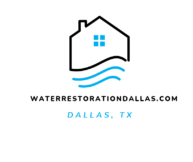Water damage can be a devastating experience, causing significant damage to your property and disrupting your life. In such situations, homeowners insurance can provide valuable financial assistance to cover the costs of repair and restoration. However, navigating the insurance claims process for water damage can be complex and overwhelming. This guide provides comprehensive information to help you understand your insurance coverage, effectively communicate with your insurance company, and ensure you receive the compensation you deserve.
Understanding Your Insurance Coverage
The first step in dealing with water damage is to understand the coverage provided by your homeowners insurance policy. Carefully review your policy documents to determine what types of water damage are covered and under what circumstances. Pay close attention to any exclusions or limitations that may apply.
Common types of water damage covered by homeowners insurance include:
- Sudden and accidental water discharge: This covers incidents such as burst pipes, overflowing appliances, or water heater failures.
- Weather-related water damage: This covers damage caused by rain, wind, or hail.
- Frozen pipes: This covers damage caused by pipes bursting due to freezing temperatures.
Filing an Insurance Claim
Once you’ve assessed the damage and determined that it is covered by your insurance policy, promptly file a claim with your insurance company. The sooner you report the damage, the sooner the claims process can begin.
To file a claim, typically follow these steps:
- Contact your insurance company: Provide them with details about the water damage, including the cause, location, and extent of the damage.
- Document the damage: Take photographs and videos of the damaged areas, including any personal belongings affected.
- Obtain estimates: Obtain estimates from qualified contractors for the repair and restoration work.
- Provide supporting documentation: Submit your claim form, along with photographs, estimates, and any other requested documentation to your insurance company.
Communicating Effectively with Your Insurance Company
Effective communication is crucial throughout the claims process. Maintain open and transparent communication with your insurance company, providing them with prompt responses to their inquiries and keeping them updated on the progress of repairs.
Tips for effective communication include:
- Be clear and concise: Explain the situation clearly and provide accurate information about the damage.
- Ask questions: Don’t hesitate to ask questions if you have any doubts or concerns.
- Respond promptly: Respond to your insurance company’s inquiries and requests in a timely manner.
Ensuring Proper Restoration
Once your claim is approved, it’s important to ensure the damaged property is restored to its pre-damage condition. Selecting a qualified and experienced water damage restoration company is crucial.
When selecting a restoration company:
- Obtain multiple estimates: Compare estimates from different companies to ensure you’re getting a fair price.
- Verify credentials: Check the company’s licenses, certifications, and insurance coverage.
- Read reviews: Check online reviews to assess the company’s reputation and customer satisfaction.
- Communicate clearly: Clearly communicate your expectations and requirements to the restoration company.
Additional Tips
- Keep records: Maintain copies of all correspondence, documentation, and estimates related to your insurance claim.
- Seek legal advice: If you have any disputes or disagreements with your insurance company, consider seeking legal advice from an experienced attorney.
Water damage can be a stressful and challenging experience. However, by understanding your insurance coverage, communicating effectively with your insurance company, and selecting a reputable restoration company, you can navigate the claims process and ensure your property is restored to its pre-damage condition. Remember, prompt action and thorough documentation are key to a successful insurance claim and a smooth restoration
